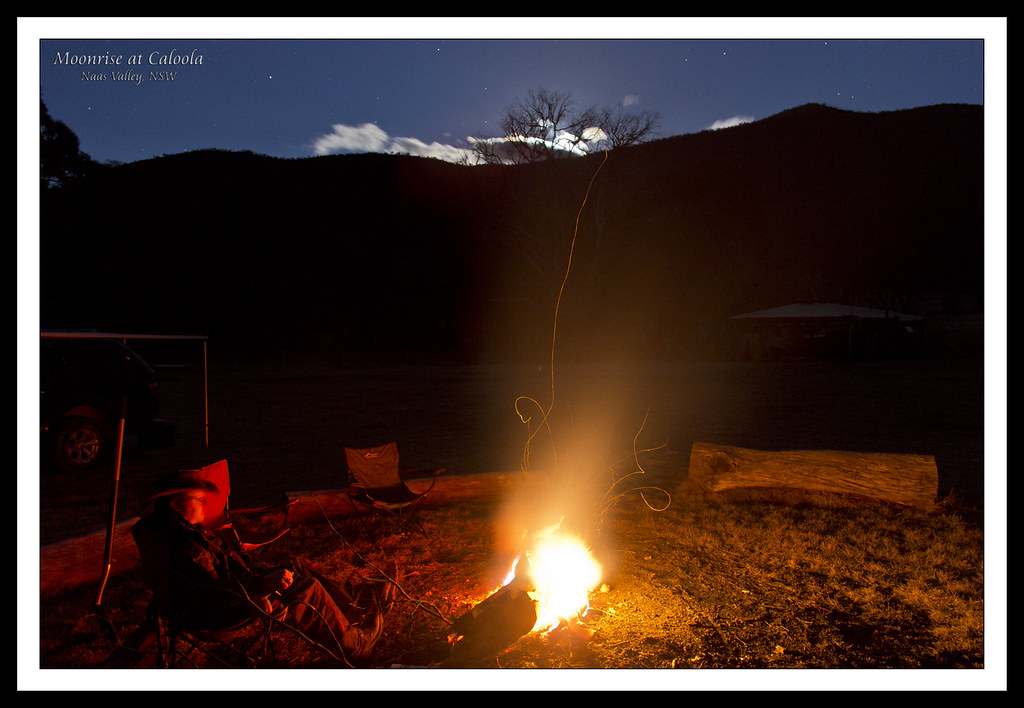I was doing some long exposure night shots last night, but with such low light, it's basically impossible to compose the image with the camera when you can't see the image in the viewfinder or on the live view screen.
I tried several times to use "trial and error" by taking a shot, looking at the result, then moving the camera slightly to adjust for the error in composition and taking the shot again.
But the difficulty with this, is that I had to aim the camera first at the campfire and press the button halfway to get it to focus, then reposition it for the shot, but of course that meant every time I moved the camera to get focus, it became hard to judge exactly where it had last been to make the adjustment from the previous shot.
Apart from the one shot where I had two vehicle's headlights on so I could compose the shot with light (before turning them off for the shot) it was proving a very frustrating experience.
Despite all this, the trial and error sort of worked to a degree for a while, but then when I wanted to get the moonrising, I had probably only about 1 minute to get the shot right before the moon would be too high, and with 30 second exposures, I had barely time for two goes, which wasn't really enough, so the best shot with the moon in exactly the right spot, had the person's feet hard against the edge of the bottom of the shot, probably better than cutting OFF the feet, but still hardly good composition.
There must be some way to take night shots when it's too dark to see anything in the viewfinder or rear screen.







 Thanks useful information:
Thanks useful information: 
 Reply With Quote
Reply With Quote Add To Bookmarks
Add To Bookmarks












 Threadstarter
Threadstarter
 any excuse to buy a new torch - I'm a bit of a torch nut. Pity my 10 million Candlepower torch weighs a tonne, and sucks it's battery dry far too fast to last as long as I spend playing around on a night shoot.
any excuse to buy a new torch - I'm a bit of a torch nut. Pity my 10 million Candlepower torch weighs a tonne, and sucks it's battery dry far too fast to last as long as I spend playing around on a night shoot.


 , I had been meaning to ask...
, I had been meaning to ask...








